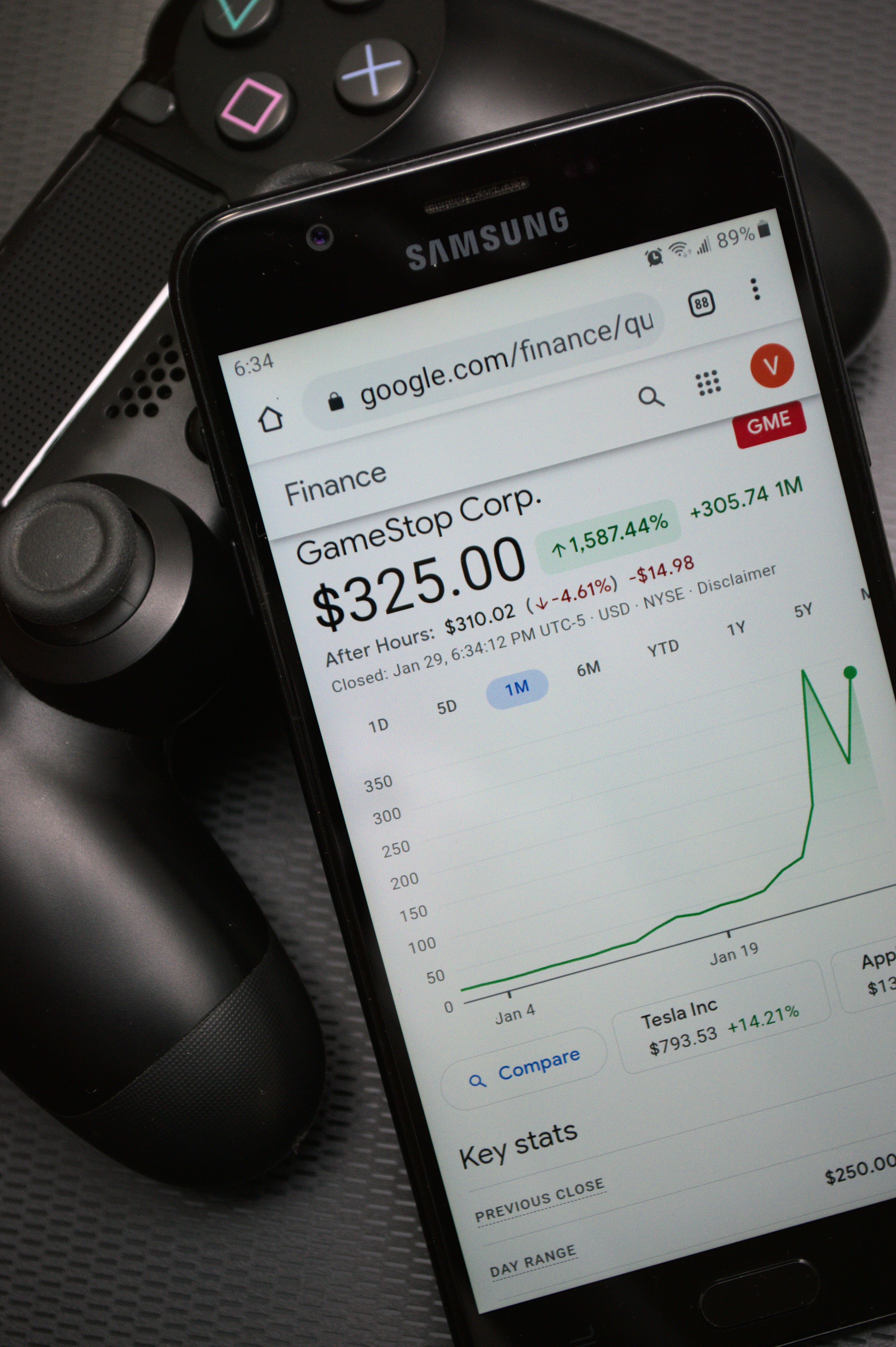
Overview of Nvidia’s Market Position
Nvidia Corporation, founded in 1993, has evolved into a leading player in the graphics processing unit (GPU) market and has significantly expanded its portfolio to include artificial intelligence (AI) technology and data center solutions. Initially recognized for its gaming GPUs, Nvidia has transitioned over the years to capitalize on emerging technological trends, enabling it to establish a strong market position in both consumer and enterprise sectors. Its overarching vision is to harness the power of GPU computing to drive innovation across various industries.
The company’s GPUs serve a diverse range of applications, from enhancing video game graphics to powering complex machine-learning algorithms. Nvidia’s dominance in the gaming industry is further complemented by its advancements in AI-driven technologies, positioning the company as a key player in the rapidly growing AI market. Technologies like Nvidia’s CUDA parallel computing platform have become integral to developers, thereby fostering a robust ecosystem around its products. Furthermore, Nvidia’s strategic investments in AI have also expanded its foothold in the data center market, allowing businesses to leverage its technology for high-performance computing and cloud applications.
In addition to its strong product portfolio, Nvidia operates in a competitive landscape characterized by major players such as AMD and Intel. These companies pose significant competition, yet Nvidia’s strategic initiatives, such as collaborations with critical partners and continuous innovation, help differentiate its offerings and enhance its competitive advantage. By consistently pushing the boundaries of GPU performance and AI technology, Nvidia not only caters to the immediate needs of consumers but also anticipates future industry trends, setting the stage for sustainable growth. As the demand for AI capabilities and high-performance computing continues to rise, Nvidia’s market position appears robust, promising an optimistic outlook for the company’s future performance.
Factors Influencing Nvidia’s Stock Price
Nvidia Corporation has positioned itself at the forefront of technological innovation, particularly in areas such as graphics processing units (GPUs), artificial intelligence (AI), and autonomous vehicle technology. These innovations are critical internal factors that play a significant role in determining the company’s stock price over the coming years. Product launches and advancements in GPU technology continue to attract a wide range of customers, resulting in increased demand that positively influences Nvidia’s market valuation.
Moreover, substantial earnings reports will also be instrumental in shaping investor sentiment. Analysts routinely assess Nvidia’s quarterly performance to gauge its financial health and growth trajectory. Success in meeting or exceeding analysts’ revenue and earnings forecasts often leads to positive movements in stock price, establishing confidence among investors. Conversely, disappointing results might lead to pessimism that could negatively impact stock performance.
On the external front, market trends play a pivotal role in influencing Nvidia’s stock price. The gaming industry, for instance, is rapidly evolving with increasing demands for high-performance GPUs. Nvidia’s ties to gaming hardware render it significantly affected by trends such as the rise of eSports and the proliferation of high-definition game streaming. Likewise, developments in AI and machine learning serve as catalysts, as businesses increasingly seek advanced computing power to facilitate complex tasks, thereby expanding Nvidia’s market opportunities.
Economic conditions are another crucial factor that cannot be overlooked. Fluctuations in interest rates, inflation, and overall economic stability impact investors’ willingness to invest in tech stocks like Nvidia. Regulatory changes, both in the U.S. and globally, may influence operational costs and market accessibility, directly affecting stock price. Additionally, monitoring the growth of automotive sectors, especially as electric vehicles gain popularity, will provide insights into Nvidia’s complete performance. Taken together, these internal and external factors will shape the trajectory of Nvidia’s stock price through to 2030.
Market Predictions and Analysts’ Insights
The future trajectory of Nvidia’s stock price through 2030 has garnered considerable attention from market analysts and investment experts alike. Many have offered predictions that highlight both the opportunities and challenges facing the company, driven primarily by its significant position in the rapidly evolving technology landscape. With ongoing advancements in artificial intelligence (AI), machine learning, and gaming technology, Nvidia is poised for continued growth. Analysts’ forecasts for Nvidia’s stock price vary widely, reflecting the complex interplay of market dynamics and technological innovations.
Several analysts project bullish scenarios, predicting that Nvidia’s stock could reach new highs, citing their strong foothold in the GPU market and the rising demand for AI-driven applications. For instance, some estimates suggest a possible valuation of over $1,000 per share by 2030, buoyed by the anticipated expansion of AI and data center markets. These optimistic views are often grounded in Nvidia’s track record of innovation and strong earnings growth, coupled with an expanding market share in key sectors.
Conversely, a subset of analysts adopts a more cautious approach, highlighting potential risks that could impede Nvidia’s growth trajectory. Concerns over increased competition in the semiconductor industry, regulatory challenges, and broader economic uncertainties pose potential headwinds. Analysts advocating this bearish outlook offer price targets significantly lower, suggesting a more conservative approach to investment in Nvidia stock. They argue that while the company is well-positioned, external factors could adversely affect its profitability.
In summary, Nvidia’s stock price predictions through 2030 present a landscape filled with both optimism and skepticism. As the company navigates its growth path, investor sentiment will likely hinge on whether it can continue to innovate and adapt to an ever-changing technological environment, alongside addressing market challenges effectively.
Investment Strategies for Navigating Nvidia’s Stock
Investing in Nvidia stock presents both opportunities and challenges for prospective investors aiming to navigate the market until 2030. A fundamental investment strategy involves a thorough risk assessment, which should be the cornerstone of any investment decision. Investors must evaluate their risk tolerance and consider market volatility, especially in industries driven by rapid technological advancements. Understanding one’s risk appetite can help determine whether to adopt a long-term or short-term investment approach when investing in Nvidia.
In choosing between long-term and short-term investments, a long-term strategy generally benefits from Nvidia’s potential growth trajectory, particularly as the company expands its dominance in sectors such as artificial intelligence and gaming technology. Investors who adopt a long-term perspective are more likely to weather market fluctuations and reap the rewards of sustained growth over time. Conversely, short-term investment strategies may appeal to those looking to capitalize on price volatility and market trends. Engaging in technical analysis can provide short-term investors with insights into optimal entry and exit points, further aiding their trading strategies.
Another crucial aspect is asset diversification, which can mitigate risks associated with any single investment. By diversifying their portfolios, investors can offset potential losses in Nvidia stock with gains from other asset classes. This strategy not only balances risk but also position investments in sectors that can complement Nvidia’s growth, such as cloud computing or semiconductor alternatives.
Staying informed about market trends and Nvidia’s financial health also enhances investment decisions. Regularly monitoring earnings reports, product launches, and industry news can provide valuable insights. Utilizing financial platforms and market analysis tools aids in evaluating Nvidia’s ongoing performance. Strategic trade execution, through limit orders or stop-loss orders, can further enhance investment outcomes by minimizing risks associated with price fluctuations. By employing these strategies, investors can navigate Nvidia’s stock with greater confidence and foresight as they plan for 2030.
